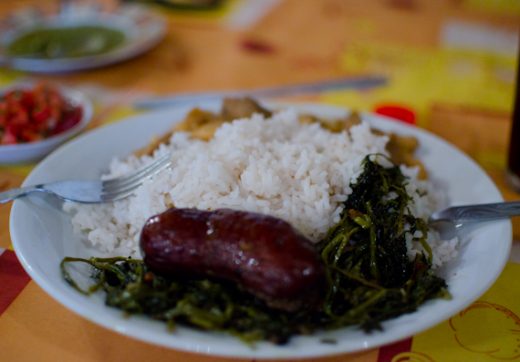Survol de Fort-Dauphin
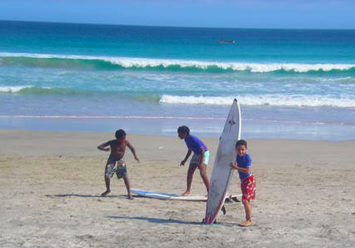
Vous aurez compris qu’on veut parler de Fort–Dauphin, la ville touristique située au Sud Ouest de Madagascar, loin du Fort Dauphin du Manitoba maintenant devenu un musée.La ville est aussi connue sous le nom de Faradofay (malgachisation de fort dauphin), Taolagnaro, Tolagnaro, Tôlagnaro, ou Tôlanaro. Elle constitue le chef-lieu de la région d’Anosy dans l’ancienne province de Toliara.
Un nom expressif
Il y a réellement un fort dans la ville qui a été construit par la Compagnie Française des Indes Orientales en 1943. Celui-ci a été nommé en l’honneur du prince héritier de la France. Cependant, les malgaches l’ont toujours nommé Taolagnaro.
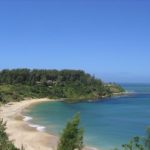
Taolagnaro vient du vocable taolana maro qui veut dire beaucoup de squelettes ou beaucoup d’os. Maintenant, vous devrez être avertis que les noms de ville à Madagascar trouvent leur origine dans des petites anecdotes locales. Taolagnaro n’y fait pas exception.
Voici l’histoire: Un arbre à fleurs meurtrières, appelé Hazokomanga, avait été planté au fond de la presqu’île d’Ehoala, le lieu de naissance de la ville de Taolagnaro. L’odeur de ses fleurs suffoquait les oiseaux, les animaux ainsi que les hommes qui y passèrent; lesquels mouraient alors à son pied. Les os ainsi accumulés ont été à l’origine du vocable taolana maro.
Un peuple « marin »
Le peuple natif de la région s’appelle Tanosy ou Antanosy – littéralement ceux qui viennent de l’île; en faisant référence à la presqu’île d’Ehoala. Ils seraient d’origine très diversifiée dont, entre-autres, les matelots d’un navire échoué venant du Gujarat. Leurs activités principales relèvent d’ailleurs de la mer et de la pêche. Néanmoins, ce sont aussi des riziculteurs, des éleveurs, des forgerons et d’habiles charpentiers.
Fort-Dauphin accueillit l’établissement français le plus durable à Madagascar. Il abritait des communautés de malgache, français, chinois et pakistanais jusqu’en 1975 lors de la 2ème république.
Un climat idéal pour les activités balnéaires
Comme partout à Madagascar, il y a principalement deux saisons: une froide et sèche de mai à octobre, et une autre chaude et humide de novembre à avril. La température maximum moyenne de la saison froide est de 26°C versus 28.66°C pour la saison chaude. Il n’y a pas de grande différence entre les deux saisons. Par contre, pendant la saison froide, le début de la matinée et la fin de la journée sont un peu frais….quoi que c’est relatif puisque frais à Taolagnaro veut dire un minimum moyen de 16°C pour juillet, le mois le plus froid.
L’oasis du Sud Ouest malgache
Même s’il se trouve dans la région aride du Sud de Madagascar, Taolagnaro reçoit plus de précipitations que les régions environnantes grâce à la proximité d’une barrière montagneuse. Les mois les plus humides, pendant lesquels les précipitations dépassent les 100 mm, sont de décembre à mars. La ville est ainsi plus verdoyante d’où son appellation d’oasis du Sud Ouest.
Cela dit, Taolagnaro est rarement ravagée par les cyclones tropicales puisque sur les 18 cyclones tristement célèbres ayant touché la Grande Île, Taolagnaro a subi les dégâts de 3 d’entre eux seulement. Il s’agit respectivement de Daisy et Julita en 1994, et Gretelle en 1997.
Une mutation certaine
Les forces de la nature laissent peut-être peu de trace sur la région, mais le passage de l’homme est loin d’être aussi discret. En effet,  la région d’Anosy est maintenant en pleine transformation à cause de la mine d’ilménite avec le Qit Madagascar Minerals ou QMM, une filiaire du groupe Rio Tinto en partenariat avec l’État malgache. La construction a été financée aux montants de 240 millions de dollars US pour Rio Tinto QMM et de 35 millions de dollars US pour l’État malgache. Il y a eu la construction de nouvelles routes, d’habitations et d’autres infrastructures destinées au développement de la mine. Le tout coûterait environ 1 milliards de dollar américain…imaginez le changement que ça pourrait faire!
la région d’Anosy est maintenant en pleine transformation à cause de la mine d’ilménite avec le Qit Madagascar Minerals ou QMM, une filiaire du groupe Rio Tinto en partenariat avec l’État malgache. La construction a été financée aux montants de 240 millions de dollars US pour Rio Tinto QMM et de 35 millions de dollars US pour l’État malgache. Il y a eu la construction de nouvelles routes, d’habitations et d’autres infrastructures destinées au développement de la mine. Le tout coûterait environ 1 milliards de dollar américain…imaginez le changement que ça pourrait faire!
Les globetrotteurs intéressés aux sujets d’impacts socio-économiques de la mine sur la communauté locale auront un site d’expérience idéal. Sur ce sujet, plusieurs organisations non-gouvernementales sont représentées à Taolagnaro pour assurer l’aide au développement communautaire. Il y a entre-autres Andrew Lees Trust pour l’éducation social et environnemental, Azafady et Anosy Community Development Trust pour le développement socio-économique, Asity Madagascar pour l’environnemental, Action Socio-Sanitaires et Organisation Secours (ASOS), CARE, the Libanona Ecology Centre, et le WWF. Vous aurez compris que les controverses sur la mine et la communauté font actuellement partie du paysage de Fort-Dauphin.
Un pont vers …
Le changement majeur survenu à Fort-Dauphin est sans doute le nouveau port d’Ehoala juste à l’Ouest de la ville. Fort-Dauphin recouvre petit-à-petit la vitalité qu’il avait dans les années 60 et 70; et cela en dépit de l’entrée significative de devises étrangères par l’exportation de langouste vivante (250 à 350 tonnes/année entre1990 et 2005), de saphir, du projet QMM et du tourisme.

Il faut dire que pour un temps, l’ancien port était d’une importance local seulement et les routes le reliant au reste du pays étaient difficiles.
Le port d’Ehoala est fonctionnel depuis le 8 juillet 2009. C’est un port multifonctionnel, d’utilité publique, et en eaux profondes – 15,75 mètres à quai – avec une gestion privée. Le port possède 400 hectares d’espace disponible pour le développement industriel dont Ehoala Park et Ehoala village. L’approvisionnement en eau et en électricité est assuré par le projet initiateur de Rio Tinto QMM.
Présence canadienne notable
Les canadiens sont définitivement présents économiquement à Fort-Dauphin. Les hôtels en ville les accueillent maintenant régulièrement, surtout les travailleurs de QMM. Assurez-vous donc d’avoir une chambre d’hôtel confirmée avant d’y aller car il peut arriver qu’il n’y ait plus aucune place de disponible.
Fort-Dauphin n’attire pas seulement les travailleurs. Au contraire, c’est une destination de vacances idéale aussi bien pour les malgaches que pour les touristes étrangers. Voyagiste Madagascar a listé pour vous quelques spots incontournables.
Libanona Beach – le paradis des surfeurs
Libanona Beach est une plage réputée pour être la plus belle et la plus propre de Taolagnaro. Au 19ème siècle, l’endroit n’était encore qu’une simple dune de sable, au temps des missionnaires luthériens qui y étaient installés. Ces derniers y ont construits des chalets qui servaient de gîte d’étape pour ceux qui rendaient visite à leurs enfants à l’école missionnaire. Un scoop! Le premier président malgache Philibert Tsiranana avait même pour habitude d’y séjourner dans une villa juste au-dessus de la plage.
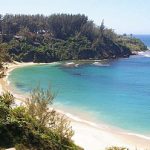 Fort-Dauphin est la ville du surf à Madagascar grâce à Libanona Beach. La journée internationale du surf y est célébrée tous les 20 juin comme dans toutes les plages du monde entier. Le surf y est un sport populaire et il existe des clubs, des associations et des locations de matériel de surf sur place.
Fort-Dauphin est la ville du surf à Madagascar grâce à Libanona Beach. La journée internationale du surf y est célébrée tous les 20 juin comme dans toutes les plages du monde entier. Le surf y est un sport populaire et il existe des clubs, des associations et des locations de matériel de surf sur place.
La saison froide est la période idéale pour surfer, soit à la période des grandes vacances scolaires de mi-juin à mi-septembre environ. Les vents du large viennent du nord, et la direction de la houle idéale est du sud sud-ouest. Même s’il y a des vagues, la plage n’est jamais bondée; mais faites gaffe aux blessures et aux rochers.
Réserve de Berenty
Berenty est une petite réserve privée longeant la rivière de Mandraka. Elle se trouve à 2 heures de voiture à partir de la ville de Fort-Dauphin. Elle est surtout connue pour ses lémuriens dont le spectaculaire « danseur », le Propithèque de Verreaux, connu localement sous l’appellation sifaky. On les appelle ainsi à cause de leur cri d’alerte au danger qui ressemblent à « shi-fak ».
Berenty Lodge offre un hébergement à même la forêt ce qui rajoute à son authenticité. Le Lodge compte 29 chambres, un restaurant, un bar, une cafétéria, une boutique, une blanchisserie et une piste d’atterrissage pour avion léger.
Parc National d’Andohaleha
Ses coordonnées GPS sont 24º 30′ Sud – 25º 02′ Sud et 46º 32′ Est – 46° 54′ Est
Le parc d’Andohaleha est la seule aire protégée malgache qui abrite une forêt dense et humide au Sud du Tropique du Capricorne. Elle constitue la passerelle naturelle qui relie l’écorégion de l’Est à celle du Sud.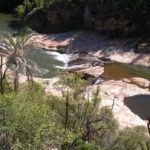
Il abrite 12 espèces de lémuriens, 129 espèces d’oiseaux, 75 espèces de reptiles et 50 espèces d’amphibiens. Ne ratez pas le maki à Ihazofotsy. Il est gris, avec une queue annelée de blanc et de noir, et haut de 50 cm. Vous connaissez sûrement le roi Julien dans le film Madagascar. C’est un maki!
Côté flore, vous pourriez y voir le baobab nain, le palmier trièdre, la vanille sauvage ou le fameux ravenala. Le ravenala, aussi appelé « arbre du voyageur », permet aux voyageurs de s’arrêter pour profiter de son ombre et de s’abreuver grâce à l’eau qu’il renferme dans son tronc. C’est une espèce endémique à Madagascar
Réserve de Nahampoana
Nahampoana est une ancienne station d’acclimatation botanique d’espèces utiles à Madagascar créée vers 1900. Celle-ci se trouve à 20 minutes de voiture du centre-ville par une route longeant le lac de Lanirano. La réserve est gérée par Air Fort Services à Fort Dauphin. On peut y trouver les caméléons, qui font la renommée de Madagascar au même titre que les lémuriens. Il y a aussi des crocodiles, des tortues, des lémuriens diurnes et nocturnes, la végétation et la balade en pirogue. Il est possible de se loger et de se restaurer sur place. On peut également profiter de la piscine naturelle, la cascade et la grotte.
Les criques de Lokaro
Elles se trouvent à 40 km au nord est de la ville. Vous verrez la multitude de petits îlots rocheux aussi fascinants les uns et les autres. C’est un site idéal pour les plongées sous-marines, la baignade, les promenades en pirogue et bien sûr le tourisme naturel. Ne manquez pas l’occasion de voir les plantes carnivores comme les népenthes qui abondent dans cette région.
Le lac Vinanibe
Ce lac immense, bordé de villages de pêcheurs, est séparé de la mer par une magnifique plage de sable blanc. C’est un endroit idéal pour les amateurs de sport de glisse et d’activités nautiques.  Il se trouve à 8 km environ de Fort-Dauphin.
Il se trouve à 8 km environ de Fort-Dauphin.
L’accès est public et c’est un bon spot pour le surf avec des vagues rapides, puissantes et amusantes. Ces dernières sont de type banc de sable, de direction droite et gauche, et de longueur de 50 à 150 mètres, pouvant parfois atteindre 300 mètres. La houle est de direction sud, sud-est et est. Le vent est de direction nord et nord-ouest.
On y trouve un centre nautique équipé d’une infrastructure d’accueil et de matériel haut de gamme. Il y a aussi le Vinanibe Lodge composé de 15 bungalows confortables en dur habillés de bois avec vue sur le lac.
Le pic St-Louis
Le pic Saint Louis est le point culminant de la ville de Taolagnaro à 529 mètres d’altitude. Deux sentiers mènent au sommet l’un plus abrupt et donc très sportif avec 1h30 environ de marche; et l’autre plus modéré avec à peu près 2 à 3 h de marche. Une fois au sommet, on a une vue panoramique et unique sur les régions environnantes.
Des sites historiques
On peut voir les nombreuses pierres levées qui font office de sites sacrificiels de la culture Antanosy. Il y a aussi les vestiges des bâtiments autrefois occupés par les français, les portugais ou les missionnaires américains, et l’hôtel de ville.
Si vous êtes un amateur du tourisme culturel, une visite du Fort Flacourt ou camp Flacourt s’impose. Le bâtiment est actuellement occupé par l’armée malgache. Il a été nommé ainsi en l’honneur d’Étienne de Flacourt, écrivain, employé et actionnaire de la compagnie des Indes et « commandant de Madagascar ».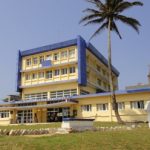
Un autre site historique: le Mahavoky hôtel. C’est l’ancien Missionary Childern’s Home au temps des missionnaires luthériens américains établis en 1888 pour une centaine d’années environ. Ce sont eux qui ont été à l’origine de l’American School maintenant sis à Antananarivo et qui accueille principalement les enfants des expatriés des organisations missionnaires américaines, canadiennes, norvégiennes et malgaches. L’hôtel possède 12 chambres, une grande salle de jeux, un restaurant, et une mini-salle de gym.
Installations touristiques à Fort-Dauphin
Vous trouverez des hôtels socio-éco-responsables tels que la Berenty Lodge, le Vinanibe Lodge ou le Nahampoana Reserve. Il existe également d’autres hôtels comme Le Dauphin, Motel Gina, Gina Village, Kaleta, Miramar, Libanona, Village au Petit Bonheur et Lavasoa.
Côté restaurant, vous avez le Motel Gina, La Perline, Les Chasseurs, Anita, La Terrasse, Bai des Singes, Miramar, Petit Bonheur et Récreat. La cuisine locale utilise beaucoup les ingrédients locaux, préparés d’une façon simple sans abuser des épices qui sont pourtant très accessible sur place. Le plat principal sera du riz, comme tout bon malgache qui se respecte, accompagné de viande, volaille ou du poisson.
Si vous avez des spots locaux à suggérer, que ce soit un hôtel, un petit restaurant, un bout de paradis… qui sait… n’hésitez pas à nous en faire part. Nous sommes là pour ça!
Si vous voulez participer à étoffer nos articles sur les actualités touristiques de Madagascar ou que vous voulez tout simplement écrire un article relatif au voyage à Madagascar, pour diffusion sur notre site Internet, veuillez envoyer votre texte à info@voyagiste-madagascar.com et préciser votre nom ou pseudo avec votre e-mail. Nous nous réservons le droit de sélectionner les textes propices à la diffusion en ligne.


